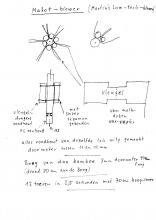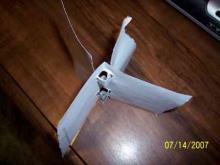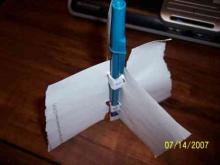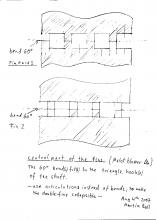Martin Boll, January, 2010
Take a normal 870ml (fruit-) can, cut with a sharp-edged knife parallel cuts in the bottom with about 5mm distance.
1.-Bend with a screw-driver and pliers the metal-ribbons to get a grate.
This alone works well, but looses some fuel/charcoal.
2.- Form a “plissee”-metal-sheet (pleated) out of the side of a (10cm
diameter) can.
Each zig-zag-side about 1cm. The angles 60°. Put the can with slits ( like
1.-) onto the plisse-grate/support, so that the slits cross the plies in 90°.
-The plissee-lines are directed in wind-direction.
-The ashes on the pleated-metal-sheet can be cleaned with a thin stick or wire, while burning; but caution, that the tin-can-stove does not tumble.
-Another advantage of the plissee is, that the grat/bottom is heat-isolating and protected by the ashes. The charcoal falling through the upper gate is burning on the ashes on the plissee.














